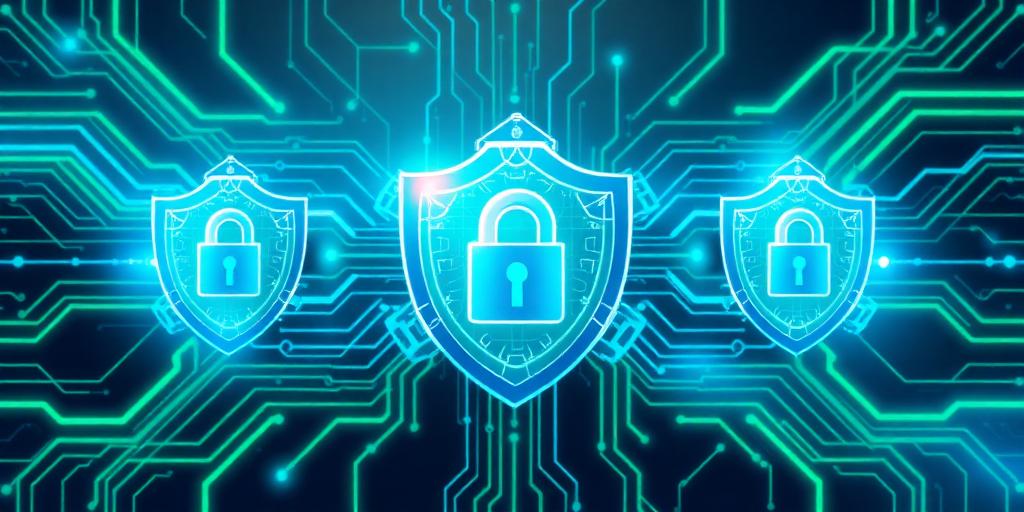In an increasingly interconnected digital landscape, robust cybersecurity is not merely an option but an imperative for businesses of all sizes. The pervasive threat of cyberattacks—ranging from sophisticated ransomware campaigns to insidious phishing schemes—demands a proactive and multi-layered defense strategy. Without the right tools, organizations risk significant financial losses, reputational damage, and the compromise of sensitive data. This comprehensive guide outlines the top 10 cybersecurity tools that are indispensable for fortifying your business's digital defenses.
1. Next-Generation Firewalls (NGFWs)
Traditional firewalls provide basic packet filtering, but modern threats necessitate a more intelligent defense. Next-Generation Firewalls (NGFWs) offer deeper packet inspection, intrusion prevention systems (IPS), application control, and threat intelligence integration. They are critical for establishing a secure perimeter, monitoring network traffic, and blocking malicious activity before it penetrates internal systems. Implementing a robust NGFW is the foundational step in network security.
2. Endpoint Detection and Response (EDR) Solutions
Endpoints—laptops, desktops, servers, and mobile devices—are common entry points for attacks. Endpoint Detection and Response (EDR) solutions go beyond traditional antivirus by continuously monitoring endpoint activity, detecting suspicious behaviors, and providing the capabilities for rapid investigation and automated response. EDR tools offer real-time visibility into threats, enabling organizations to contain and remediate breaches swiftly, minimizing potential damage.
3. Security Information and Event Management (SIEM) Systems
SIEM systems consolidate and analyze security data from various sources across an organization's IT infrastructure, including network devices, servers, applications, and security tools. By correlating events and identifying patterns that indicate a potential threat, SIEMs provide a centralized view of security posture, facilitate compliance reporting, and enable proactive threat hunting. They are instrumental in detecting advanced persistent threats (APTs) and insider threats that might otherwise go unnoticed.
4. Multi-Factor Authentication (MFA)
Passwords alone are no longer sufficient to protect user accounts. Multi-Factor Authentication (MFA) adds an essential layer of security by requiring users to provide two or more verification factors to gain access, such as something they know (password), something they have (a token or phone), or something they are (biometrics). Implementing MFA drastically reduces the risk of unauthorized access due to compromised credentials, making it a cornerstone of identity protection.
5. Data Loss Prevention (DLP) Solutions
Protecting sensitive data from unauthorized access, use, or transfer is paramount. Data Loss Prevention (DLP) solutions identify, monitor, and protect confidential information whether it's at rest, in motion, or in use. DLP systems enforce policies to prevent accidental or malicious data exfiltration, ensuring compliance with data privacy regulations like GDPR and CCPA. They are indispensable for businesses handling customer data, intellectual property, or financial records.
6. Vulnerability Management Solutions
Cyber adversaries constantly seek to exploit known weaknesses in software and systems. Vulnerability management solutions systematically identify, assess, prioritize, and remediate these security flaws. This includes regular scanning for vulnerabilities, patch management, and configuration audits. Proactive vulnerability management significantly reduces the attack surface and helps organizations maintain a strong security posture against emerging threats.
7. Email Security Gateways
Email remains a primary vector for cyberattacks, including phishing, malware distribution, and business email compromise (BEC). Email security gateways act as a first line of defense, filtering out malicious emails before they reach user inboxes. These solutions employ advanced threat detection, spam filtering, sandboxing, and URL rewriting to protect employees from email-borne threats and safeguard sensitive communications.
8. Identity and Access Management (IAM) Systems
Effective management of user identities and their access privileges is fundamental to organizational security. Identity and Access Management (IAM) systems ensure that only authorized individuals have access to the resources they need, when they need them, and nothing more. IAM solutions simplify user provisioning, de-provisioning, and privilege management, reducing the risk of unauthorized access and improving overall operational efficiency.
9. Security Awareness Training Platforms
The human element is often the weakest link in the security chain. Security awareness training platforms educate employees about common cyber threats, best practices, and organizational security policies. Regular training, often supplemented with simulated phishing attacks, empowers employees to recognize and report suspicious activities, transforming them into a crucial line of defense rather than an unwitting vulnerability.
10. Cloud Security Posture Management (CSPM)
As more businesses migrate to cloud environments, securing these dynamic infrastructures becomes critical. Cloud Security Posture Management (CSPM) tools automate the identification and remediation of misconfigurations and compliance violations across various cloud services (IaaS, PaaS, SaaS). CSPM solutions provide continuous monitoring, ensuring that cloud resources adhere to security best practices and regulatory requirements, thereby preventing common cloud-based security breaches.
Conclusion
Implementing a comprehensive suite of cybersecurity tools is no longer a luxury but a strategic necessity for business continuity and resilience. By adopting these top 10 cybersecurity solutions, organizations can establish a robust defense architecture that protects against the sophisticated and evolving threat landscape. A layered security approach, coupled with continuous vigilance and adaptation, is essential for safeguarding your business's invaluable digital assets.




